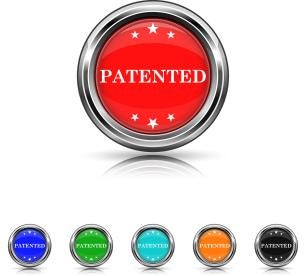With continued extraordinary growth, including a record number of patent applications filed in a single year[1], the importance of intellectual property rights in China is undeniable. And so, all eyes are on the recent revised Guidelines for Patent Examination released by the State Intellectual Property Office of the People's Republic of China (SIPO)[2] and, in particular, the implications for patent applications related to chemical, business method, and computer-implemented inventions.
The proposed amendments to the 2010 Examination Guidelines (“Guidelines”) were published for public comment on October 27, 2016 and the Revision to the Guidelines (“Revision”) entered into force on April 1, 2017. Select revisions are discussed in more detail below.
Biotech and Chemical inventions
The Revision provides patent owners with the long sought after opportunity for consideration of supplemental experimental data. Previously, when assessing the sufficiency of disclosure, SIPO examiners were precluded from considering post-filing data. Now, under the Revision[3], examiners are explicitly permitted to consider supplemental experimental data submitted by the applicant during prosecution when arguing against a lack of sufficient disclosure rejection. One important caveat: the technical effect to be proved by the post-filing experimental data should be derivable by one skilled in the art from the original disclosure of the patent application. It is also worth noting that the Revision does not indicate post-filing data can be used for reasons other than establishing sufficient disclosure – for example, supporting an argument against an inventive step rejection. Possible limitations aside, this change should be welcome news to patent owners in the biotech, chemical, and pharmaceutical fields, where data to support claims of a commercially-valuable scope is routinely not available until after filing.
Invalidity proceedings
Under the Revision[4], a patentee is now given more options to amend claims during invalidation (e.g., by adding limitations recited in other claims), whereas before, claims could only be amended by deletion of claims, combination of claims, and deletion of a technical solution from a claim. New narrowing claims cannot be added as an amendment during invalidation, unless covered in the granted claims. The Revision also places more constraints on petitioners making delayed submissions of additional causes of invalidation[5] and/or presenting additional evidence[6].
Business Method Inventions
Previously classified as a "mental activity", business method inventions were excluded from patent protection. However, under the Revision[7], a business method invention that comprises certain technical features may now be patent eligible subject matter. The addition of such features (e.g., features of a physical nature) prevents immediate rejection of the claim as directed to unpatentable subject matter and permits the claim to be examined. This does not, however, mean that recitation of a technical feature is a guarantee of patentability. It must be shown that the technical feature is adopted to solve a technical problem and achieve a technical effect, and in a manner that is inventive over the prior art. Nonetheless, the Revision has relaxed barriers to obtaining patents to business method inventions in China.
Software Inventions
Computer programs recorded on media remain excluded from patentability if they only relate to computer programs per se[8]. However, the Revision distinguished a computer program-related invention from a computer program and, moreover, permits drafting claims to computer program inventions in terms of storage medium and program flow. Also, the Revision provides that a computer program can be an element of an apparatus claim[9] and, moreover, accounts for potential confusion with “means-plus-function” claims adjusting its language[10]. While the door is open to SIPO allowing software claims, it remains to be seen how the courts will interpret such claims.
Public access of applications
The Revision broadens public access to Chinese patent applications. With respect to published and pending applications, the public now has access to preliminary examination documents as well as notifications, search reports, and decisions issued during substantive examination[11]. The public also now has access to priority documents and search reports of granted Chinese patents[12].
[1] World Intellectual Property Indicators 2016, Economics & Statistics Series (WIPO)
[2] http://www.epo.org/searching-for-patents/helpful-resources/asian/asia-updates/2016/20161102.html
[3] “For experimental data submitted after the date of filing, examiner shall also carry out examination thereon. The technical effects as demonstrated by such data shall be derived from the disclosures of the current patent application by a person skilled in the art.” (Part II, Chapter 10, Section 3.5).
[4] See Part IV, Chapter 3, Section 4.6.2
[5] See Part IV, Chapter 3, Section 4.2
[6] See Part IV, Chapter 3, Section 4.3.1
[7] Part II, Chapter 1, Section 4.2
[8] See Part II, Chapter 9, Section 2
[9] Part II, Chapter 9, Section 5.2
[10] Id.
[11] See Part V, Chapter 4, 5.2(2)
[12] See Part V, Chapter 4, 5.2(3)



 i
i

